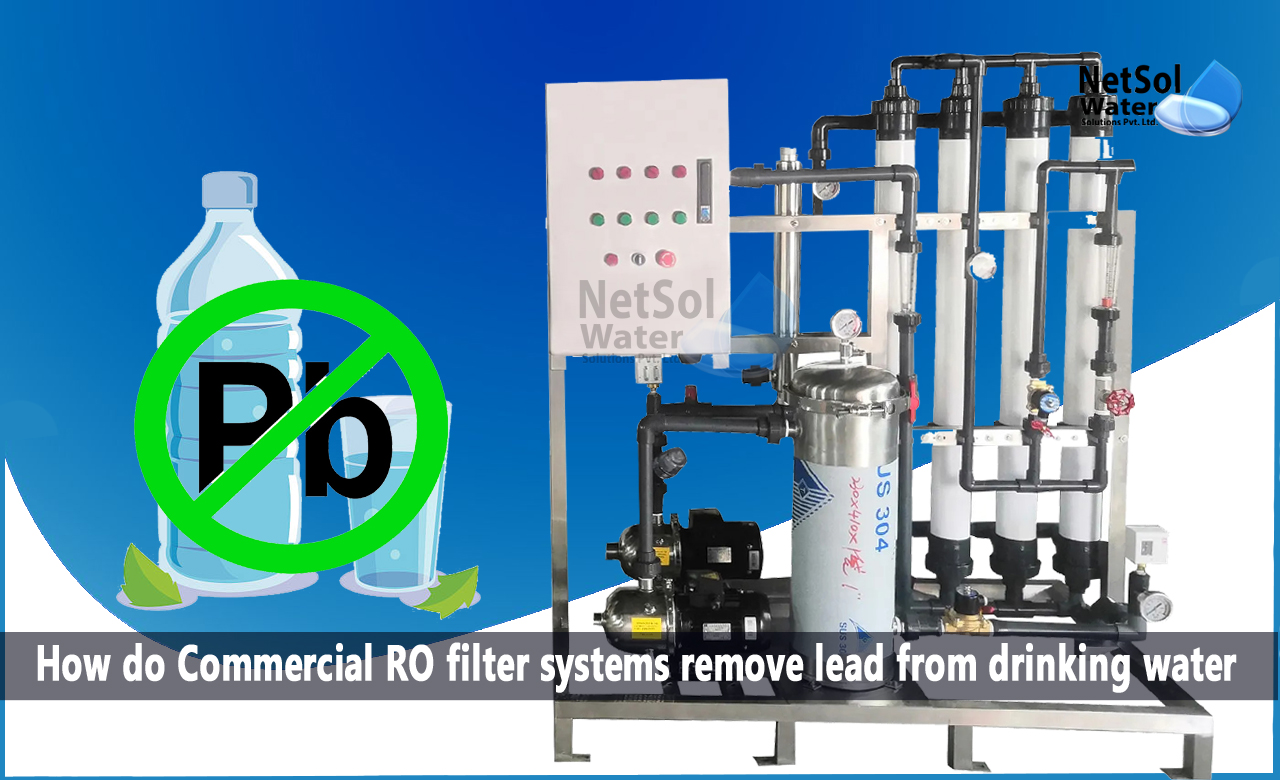One of the largest risks to the environment and public health is lead, which is prevalent in our water. Many people's concerns about the level of lead in water, which varies based on where people live, have increased after the recent Flint water crisis. Our drinking water contains a number of toxins that are dangerous to our health.
In this blog, we will discuss in brief how lead is removed from drinking water using a commercial RO filter system.
How Does Lead Get into Drinking Water?
Lead can get into our drinking water when the pipes that transport water to homes, schools, and childcare facilities start to degrade. Fixtures and pipes are particularly vulnerable to corrosion from water that is highly acidic or deficient in minerals. Although the majority of pipes today are made of copper, the risk of lead in water is still high because many homes constructed before 1986 still use lead solder to connect their copper pipes.
Water that has been contaminated with lead can enter a residence through water pipes, even in newly constructed homes.
How do Commercial RO filter systems remove lead from drinking water?
In the reverse osmosis procedure, water circulates under high pressure through a number of multi-stage filters and a semi-permeable membrane.
An activated carbon filter is typically one of the filters in a reverse osmosis system. It is typically made to remove lead utilizing adsorption, physical pore size, and ionic bonding. As the main interaction taking place in ionic compounds, ionic bonding is a chemical bond involving the electrostatic attraction between oppositely charged ions. When a nonmetal (binder/adsorbent) and a metal (lead) exchange electron, ionic bonds are created.
Lead and chlorine pollutants are drawn to the activated carbon pores because of the material's high surface area, which prevents them from moving forward with water.
Although activated carbon filters can reduce lead by up to 95%, reverse osmosis is far more effective. Reverse osmosis membranes are used to remove high amounts of lead as well as other impurities prevalent in municipal water sources, such as heavy metals, volatile organic compounds (VOCs), and chemicals, after the water has passed through the activated carbon filter.
Lead molecules cannot cross the semi-permeable barrier because they are bigger than water molecules. Since they "bounce back" from the membrane as a result, only lead-free water is left when the wastewater flushes them down the drain.
How much lead is removed by reverse osmosis?
Systems using reverse osmosis are so efficient that they can get rid of more than 99% of lead. Lead is typically removed by reverse osmosis up to 99.1% of the time. This is a superior outcome than any other filtration device, even one activated carbon filter, which typically removes about 95% of lead.
What level of lead is safe to drink?
All sources of lead exposure for kids should be reduced or stopped because there is no known safe blood level for young ones. Due to the fact that lead can be detrimental to human health even at low exposure levels, the EPA has established the maximum contaminant level objective for lead in drinking water at zero. A persistent environmental toxin that can build up in the body over time is lead. Risk varies based on the person, the water's chemical composition, and the quantity consumed. For instance, due to the huge amount of water they drink in comparison to their body size, infants who drink formula made with lead-contaminated tap water may be more at risk of exposure.
Do you need an advice or assistance on selecting the best water and waste water treatment unit? We have solutions for all your problems!
Let us now your problem, our experts will make sure that it goes away.
For an assistance or related query,
Call on +91-965-060-8473
Or write us at enquiry@netsolwater.com



